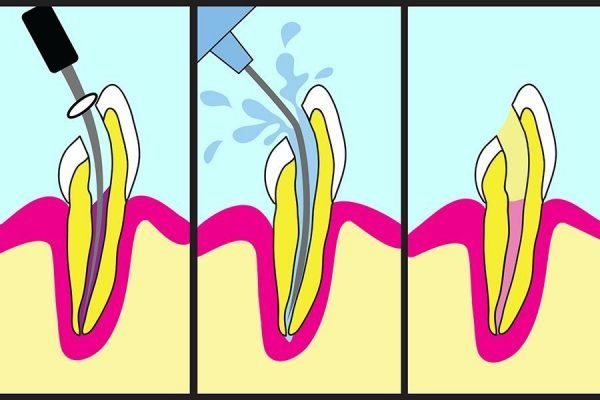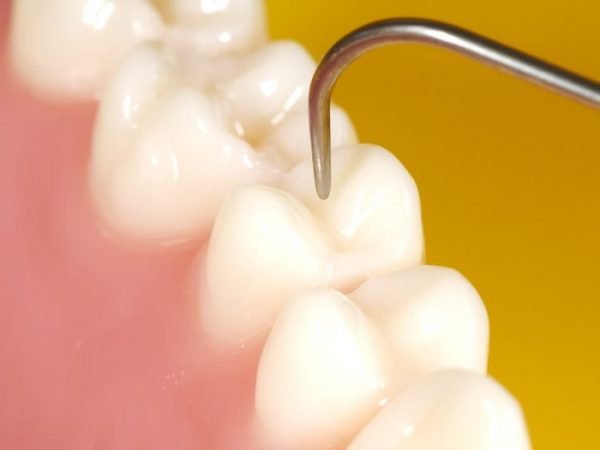ABOUT ROOT CANAL
Root canal treatment is used to save a tooth which is very decayed. It involves the removal of damaged or infected nerves and tissue from the root of the tooth.
The roots usually become infected due to a large cavity which eventually infects the pulp in the tooth and then the tissue inside the roots. The dentist cleans out the roots, before applying a filling. As a result, the tooth is “dead” but it can continue to function. Dead teeth may turn grey, and the dentist may recommend a crown or post and core treatment.
Recommended for
- Teeth that have severe damage to the pulp and nerve tissue, but can be saved
- Most dentists will recommend root canal treatment rather than removing a tooth, as it is important to preserve natural teeth whenever possible
TIME REQUIREMENTS
- Average length of stay abroad: 2 – 5 days.
Some patients need 2 appointments, for example if the tooth has several roots. Patients may also stay longer to have a custom post and core or crown fitted.

COMPARE ROOT CANAL PRICES AROUND THE WORLD
| Country | Cost |
|---|---|
| Ireland | 600€ |
| United Kingdom | 336€ |
| Croatia | 125€ |
| Mexico | 108€ |
| Spain | 100€ |
| Thailand | 90€ |
| Poland | 47€ |
| Hungary | 45€ |
HOW TO FIND QUALITY TREATMENT ABROAD
BEFORE ROOT CANAL ABROAD
To check for suitability for a root canal procedure, the dentist is likely to X-ray the affected tooth, and perform a pulp test to check the tooth for a healthy response.
HOW IS IT PERFORMED
After establishing that a root canal is necessary, the dentist will numb the area and cover it with a rubber dam to prevent infection and keep the area dry for the duration of the procedure. The dentist will then make a small hole at the top of the infected tooth and the pulp is removed from the chambers and canals of the tooth. The chambers and canals are widened to provide sufficient room for a root canal filling, and then the tooth is filled. For patients requiring two appointments, in the first sitting, the tooth is hollowed and a temporary filling is fitted, at the second appointment, the permanent filling is fitted.
Materials
Root canal fillings use a range of materials, and the specific materials used vary from clinic to clinic. The most typically used materials include tooth sealant, zinc oxide-eugenol, resins, calcium hydroxide and glass ionomers. Most commonly used materials for the obdurate include solids, semi-solids and pastes, depending on the type of cavity.
Anesthesia
Local anesthetic.
Procedure duration
The Root Canal takes 2 to 4 hours.
It can take some time to clean out the roots of a tooth and if the root has many, eg. 3 to 4 roots, it might require 2 sessions of several hours.

WHAT TO EXPECT AFTER ROOT CANAL
Post procedure care
Patients should avoid eating solid food on the tooth.
Possible discomfort
Tenderness in the tooth and jaw is normal for a few days after root canal treatment, and the treated tooth is likely to feel different from the other teeth for a longer time after treatment, but this will eventually subside.
IMPORTANT THINGS TO KNOW ABOUT ROOT CANAL
Potential risks
-
Reinfection
- Structural damage to the tooth
- Nerve damage
FREQUENTLY ASKED QUESTIONS
Usually, a local anesthetic is used during root canal treatment and it feels no different than a filling. There may be some soreness after but it will go away after a day or so.
There are some common myths linking multiple endodontic treatments such as root canals with diseases occurring elsewhere in the body, including cancer. There is no scientific evidence supporting these claims. Many of them are based on a single research study that was performed in the 1920’s and has been debunked by modern science.
There are a few risks associated with root canal treatment. The treatment may fail if an infection is not completely treated, if a new infection forms after the treatment, or if the tooth is not strong enough after treatment. In some cases, the tooth can be retreated, but sometimes the tooth is lost if the initial treatment fails. Following your dentist’s instructions and choosing an experienced, accredited dentist is the best way to reduce your risk of losing the tooth completely.
A root canal involves the removal of the nerve inside the tooth, and so the tooth is considered “dead.” However, root canal treatment intends to save the tooth from being lost and oftentimes, the tooth lasts for a long time afterward.
A root canal is not necessary for a crown, however a crown may be necessary after a root canal if the tooth is too weak to survive on its own. This can happen if the infection is too extensive and too much pulp needs to be removed.















